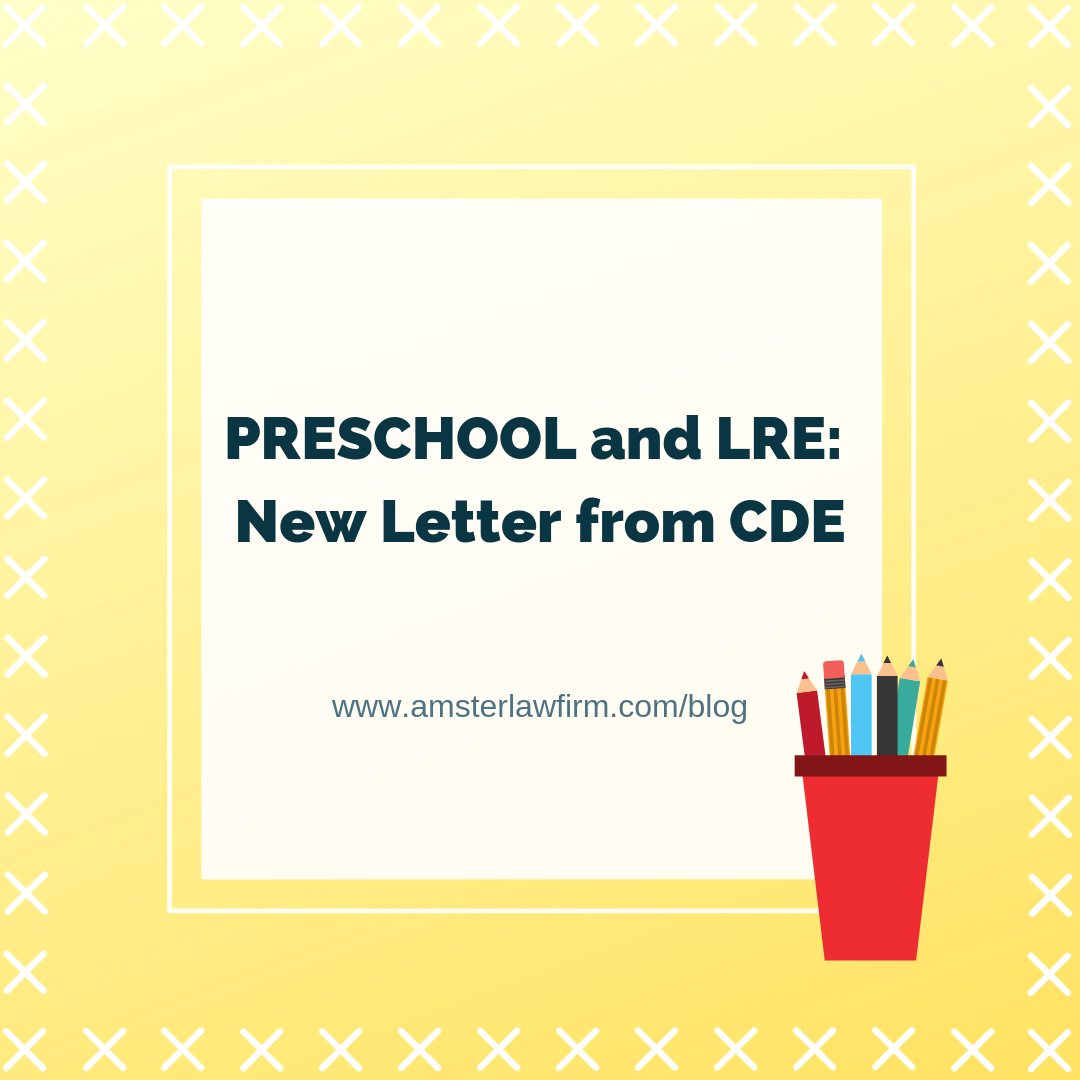On March 18, 2019, the California Department of Education issued a letter (click here for letter) to County and District Superintendents, Special Education Local Plan Area Directors, …Charter School Administrators, Principals, and Nonpublic School Directors regarding Access to Inclusive Early Learning and Care Programs for Students with Disabilities.
The letter reaffirms expectations for access to inclusive early learning for preschool programs for students with disabilities in California. This means that California affirms that all students should be educated in the least restrictive environment (LRE) and this must apply to including early learning opportunities for students with disabilities is fundamental.
The California letter follows a September 14, 2015 policy statement from the U.S. Department of Health and Human Services and the U.S. Department of Education joint policy statement to provide recommendations to states and local educational agencies (LEAs) to improve access to inclusive, high-quality early learning and care programs for students with disabilities. The joint policy statement can be found here.
It also follows, the Department of Education’s Office of Special Education and Rehabilitation Services released a Dear Colleague Letter on January 9, 2017, that reaffirmed the policy statement issued jointly with the DHHS and provide additional clarification on the requirements and strategies to provide for inclusive, high-quality early learning and care opportunities for students with disabilities. The Dear Colleague Letter can be found at here.
Both the joint policy statement and Dear Colleague Letter highlight a growing body of research indicating that all students benefit from an inclusive, high-quality early learning and care program.
Inclusion in preschool means, “including children with disabilities in early childhood programs, together with their peers without disabilities; holding high expectations and intentionally promoting participation in all learning and social activities, facilitated by individualized accommodations; and using evidence-based services and supports to foster their development (cognitive, language, communication, physical, behavioral, and social-emotional), friendships with peers, and sense of belonging.” (Joint Policy Statement at p. 3)
Additionally, the joint policy statement and DCL both outline a strong legal basis for facilitating access to inclusive early learning and care programs for students with disabilities. Part B of the Individuals with Disabilities Education Act requires special education supports and services be provided to all eligible children, ages 3 through 21, while emphasizing equal opportunities for educational benefit in the LRE (Code of Federal Regulations, Title 34, Sections 300.101 & 300.114).
LRE requirements are applicable to preschool students with disabilities. Preschool students with disabilities should be educated in regular classes with appropriate aids and supports unless the nature or severity of the disability precludes this from being achieved satisfactorily.
The joint policy statement explains that LRE requires a continuum of placement options be available to best meet the diverse needs of children with disabilities, and presumes that the first placement option considered for each child with a disability is the regular classroom the child would attend if he or she did not have a disability.
Before a child with a disability can be placed outside of the regular educational environment, the full range of supplementary aids and services that could be provided to facilitate the child’s placement in the regular classroom setting must be considered.
The letter emplores each LEA must ensure that a free appropriate public education (FAPE) is provided in the LRE to every child with a disability in its jurisdiction regardless of whether the LEA operates public general early childhood programs. (p. 5)
Finally, the joint policy statement and DCL outline specific actions to take at the state and local level to increase the number of students with disabilities participating in high-quality, inclusive early learning and care programs. These actions include educating families on the benefits of inclusion, maximizing community partnerships and available funding, and ensuring that local culture and practice reflect a commitment to providing supports and services in inclusive settings.
Let’s hope that this means that there will be more general education options for children in preschool in general education settings. If not, consider privately placing preschool children in private preschools. See the blog here.


Add Comment